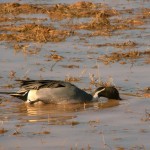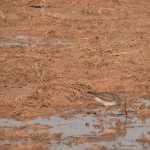6 November 2010. Gilbert Arizona. The first snow of winter is always something of a novelty, but by the umpteenth fall of January snowflakes have little charm. With swirling snow adding to the uneven piles of shoveled snow-turned ice, I opened my photo files for a reminder of livelier days. I found these photos of Black-necked Stilts I’d taken at a reservoir in Gilbert, Arizona. I remember my excitement at seeing these ballerina birds up so close, something virtually unheard of in Ontario; they were my Birds of the Day.
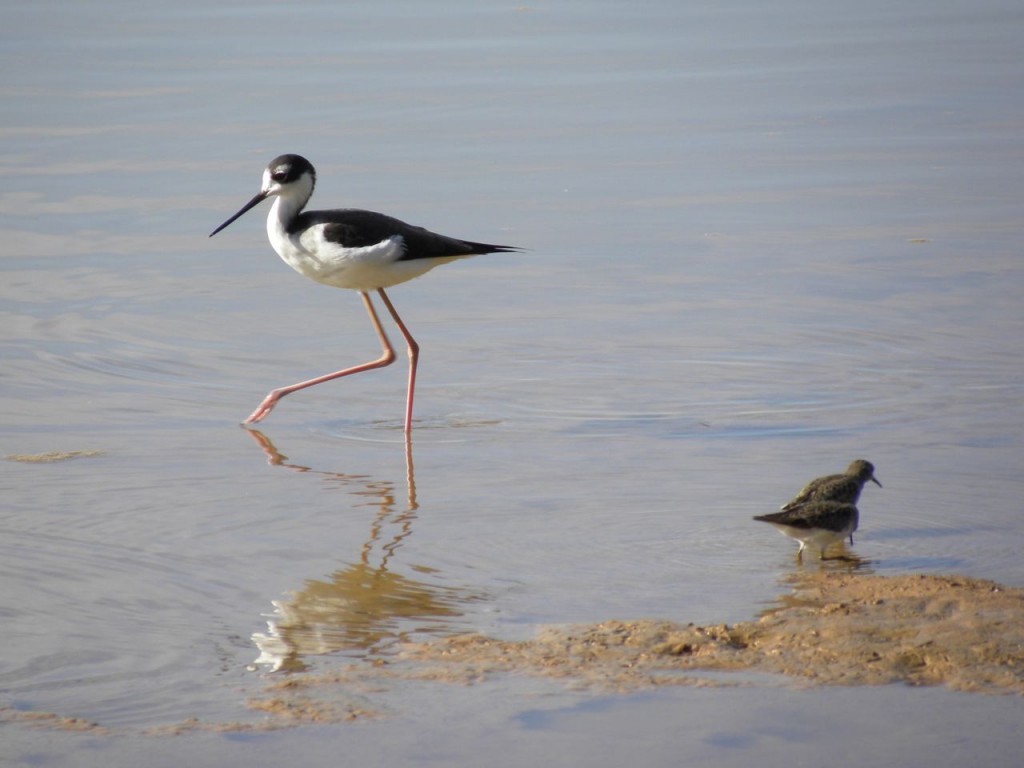
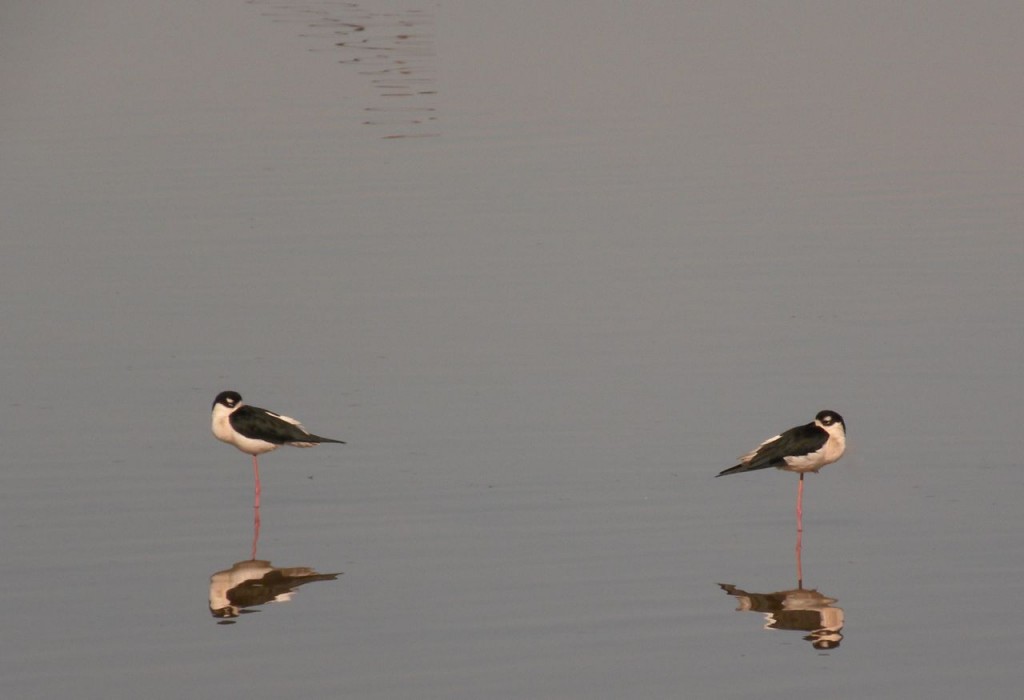
Gilbert is a generally undistinguished suburb of the sprawling metropolis of Phoenix. I imagine a few decades ago Gilbert to have been a rather quiet, crossroads town, an hour from Phoenix, that had grown up around a wet spot in an otherwise dry landscape of Saguaro Cactus, Creosote Bush and Prickly Pear. If I’m correct about its early geography, that wet spot is today a large naturalized water recycling plant. To quote local authority Judy Hedding, “The Riparian Preserve at Water Ranch is a water recycling facility for the Town of Gilbert. Gilbert treats its wastewater, and then pipes it into the basins here where it replenishes the underground water supply. The water can then be pumped out of the ground to support the water needs of the homes and businesses in Gilbert. This system, then, creates an opportunity for habitats for many kinds of wildlife and plant life that you might not see in other desert areas.”
I came to this place because any guide to birding in Phoenix will inevitably point you to it. It’s easy enough to find as long as you can navigate arrow-straight north-south or east-west roads and don’t get too discouraged by the immense distances between landmarks in metropolitan Phoenix. The Riparian Preserve is a great birding spot, my full day included sightings of Northern Pintail, Long-billed Dowitcher and many Least Sandpipers. Least Sandpipers are easily confused with Semi-palmated Sandpipers, we often see them together during fall migration back home, but one distinguishing mark is that Leasts have yellowish legs whereas Semi-pals’ legs are black; a distinction that is usually excruciatingly difficult to make out at any distance. The National Geographic Complete Birds of North America glosses over the colour of the legs a bit but notes, “Beginning birders often emphasize the yellow legs of the Least compared to the darker legs of the other two species (Semi-palmated and Western Sandpipers) but the identifications are sufficiently straightforward to eliminate the need to base an identification on a mark that can be altered by mud, lighting or something else.” That’s as may be, but sorting the species one from the other is, to me anyway, pretty well always hard going. That said, the Least Sandpipers in the photo below leaves little doubt that they have yellow legs (without being Greater or Lesser Yellowlegs – which is another story altogether.)
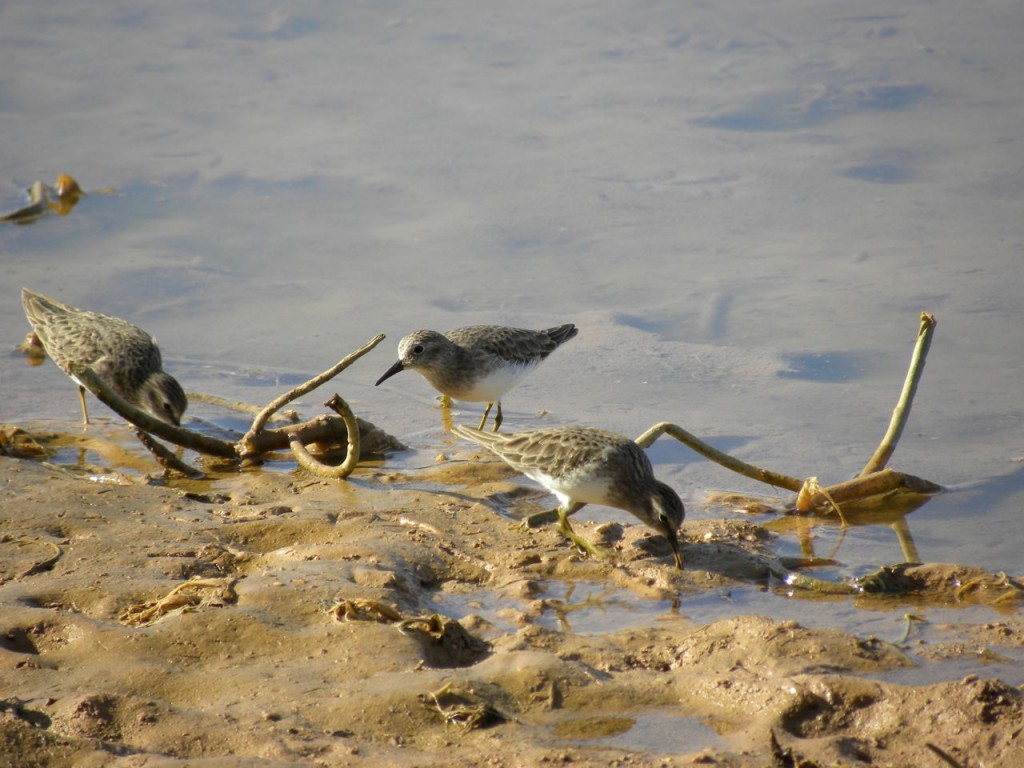
This post contains photos only visible if you’re on the website, not if you’re reading this as an email.
